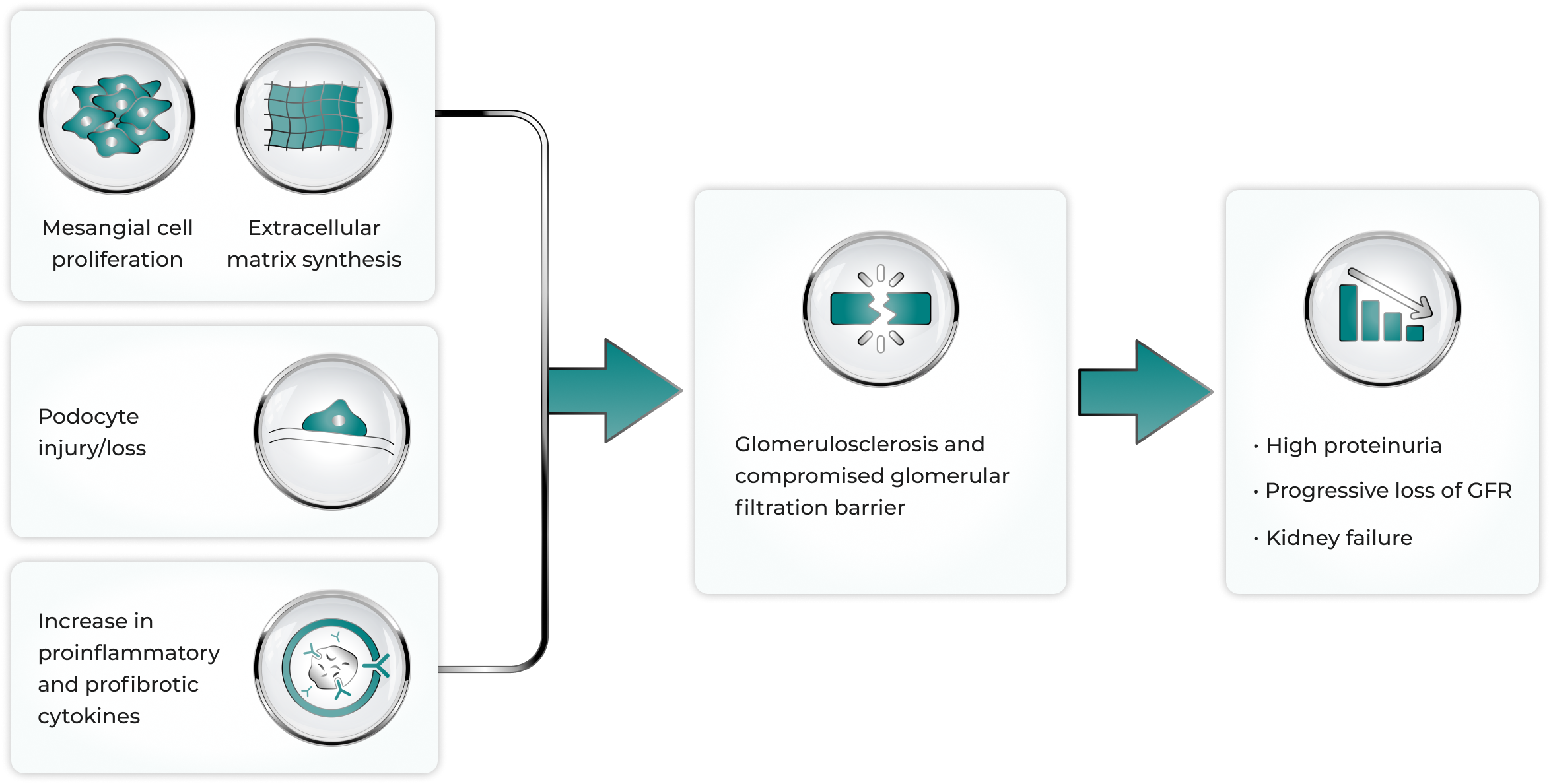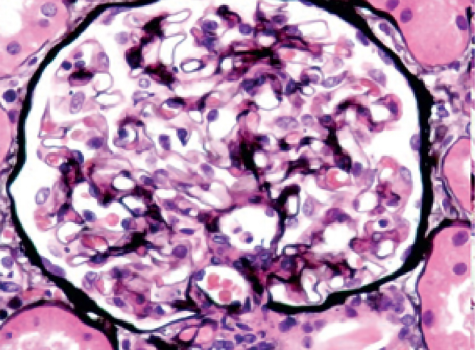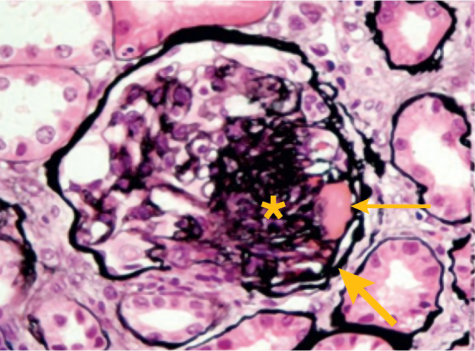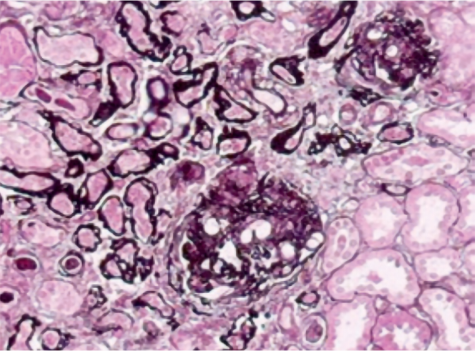MECHANISM OF DISEASE
IgA nephropathy (IgAN) is characterized by glomerular deposition of immune complexes containing galactose-deficient IgA1 that lead to kidney damage1–5
There are 4 processes or ‘Hits’ involved in the pathogenesis of IgAN:6,7

Image adapted from Suzuki H, et al. 20116




